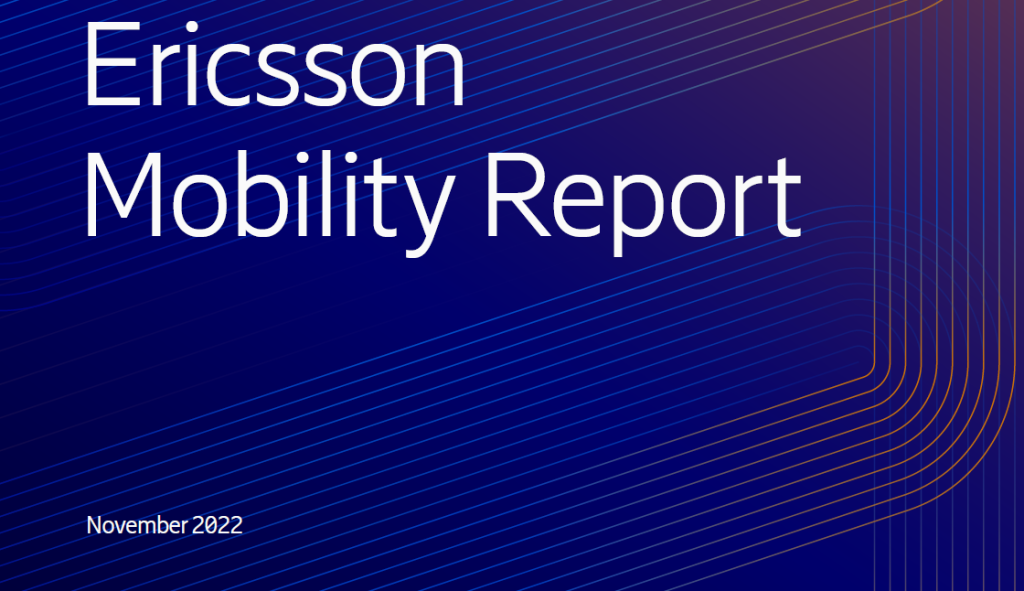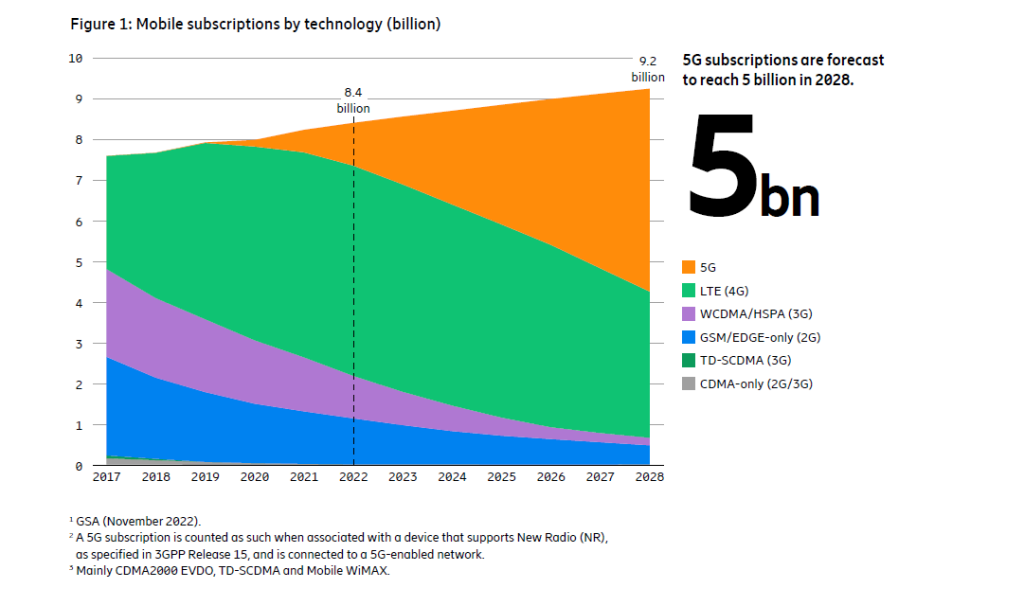
Ericsson’s Mobility Report, November 2022 edition, projects faster-than-anticipated growth in worldwide fixed wireless access (FWA) connections. It’s important to remember, too, that despite the present and impending economic troubles in many parts of the world, global 5G subscriptions are still on track to reach one billion by the end of this year and five billion by the end of 2028.
FWA is one of the early 5G use cases, especially in unserved or underserved internet markets. Driven in part by accelerated FWA plans in India and other emerging economies, FWA is predicted to grow 19% annually through 2022–2028 and surpass 300 million connections by 2028.
✔️ The latest trends on #5G and next-generation technologies
✔️ packed with industry-leading forecasts
✔️ ground-breaking data
✔️ fascinating insightsThe new Ericsson #MobilityReport is OUT NOW ⚡
Download the full version 🔽
— Ericsson (@ericsson) November 30, 2022
Ericsson Mobility Report – Key Takeaways
- Global 5G mobile subscriptions are expected to reach five billion by the end of 2028.
- Given India’s accelerated FWA plans, the forecast for fixed wireless access is 300 million connections in six years.
- The average data traffic per smartphone in the India region, at 25 GB per month, is the highest globally.
- More than three-quarters of CSPs in 100+ countries offer FWA services. One-third of CSPs offer FWA over 5G, up from one-fifth last year. In the past year, 40% of 5G FWA launches were in emerging markets.
- In July–September 2022, 110 million 5G subscriptions were added, bringing the total to 870 million.
- 5G should reach 1 billion subscriptions by the end of the year, two years faster than 4G did after its inception.
- According to the statistic, 5G is the fastest-growing mobile generation. China’s early 5G installations and the timely availability of devices from many manufacturers are key drivers.
- 5G subscription penetration in North America and Northeast Asia is predicted to reach 35% by 2022.
Ericsson Mobility Report on India’s Outlook
Indian service providers’ rapid 5G installations will lead to 31 million 5G subscriptions by 2022 and 690 million by 2028. By 2028, 5G will account for 53% of mobile subscribers. 4G subscriptions will peak in 2024 at 930 million and fall to 570 million by 2028. Jio 5G services were recently launched in all of Gujarat’s districts.

Mobile networks drive social and economic inclusion. According to Nitin Bansal, head of Ericsson India and head of Network Solutions for South East Asia, Oceania, and India, 5G will help India achieve its digital inclusion goals, particularly by extending broadband to rural and isolated homes. Enhanced mobile broadband enables citizens to access public services, supporting the government’s “Digital India” agenda.
- Enhanced mobile broadband (eMBB) and fixed wireless access (FWA) are expected to be early use cases for 5G in India.
- They will contribute to addressing the country’s low fixed broadband penetration and improving mobile data experiences.
- India has the most smartphone data usage globally. It’s expected to grow from 25 GB per month in 2022 to 54 GB in 2028, a 14% CAGR.
- Total mobile data traffic in India will grow from 18 EB per month in 2022 to 53 EB per month in 2028, a 19% CAGR. This is due to rising smartphone usage and user numbers.
- Smartphone subscriptions in India are expected to rise from 77% in 2022 to 94% in 2028.
The Ericsson Mobility Report also emphasizes the importance of reducing environmental impact. The telecommunications sector has a vital role to play in achieving global sustainability targets, both by decreasing its own emissions and by reducing carbon emissions in other industries.
Speaking on the report, Fredrik Jejdling, Executive Vice President and Head of Networks, Ericsson, says:
Communications Service providers continue to deploy 5G and the momentum for Fixed Wireless Access is accelerating. Moreover, global mobile network data traffic is practically doubling every two years. As described in this edition of the Ericsson Mobility Report, service providers are taking actions to deploy the latest generation of energy-efficient radio hardware and software, increase the use of renewable energy sources, and operate site infrastructure intelligently to reduce the environmental impact.
